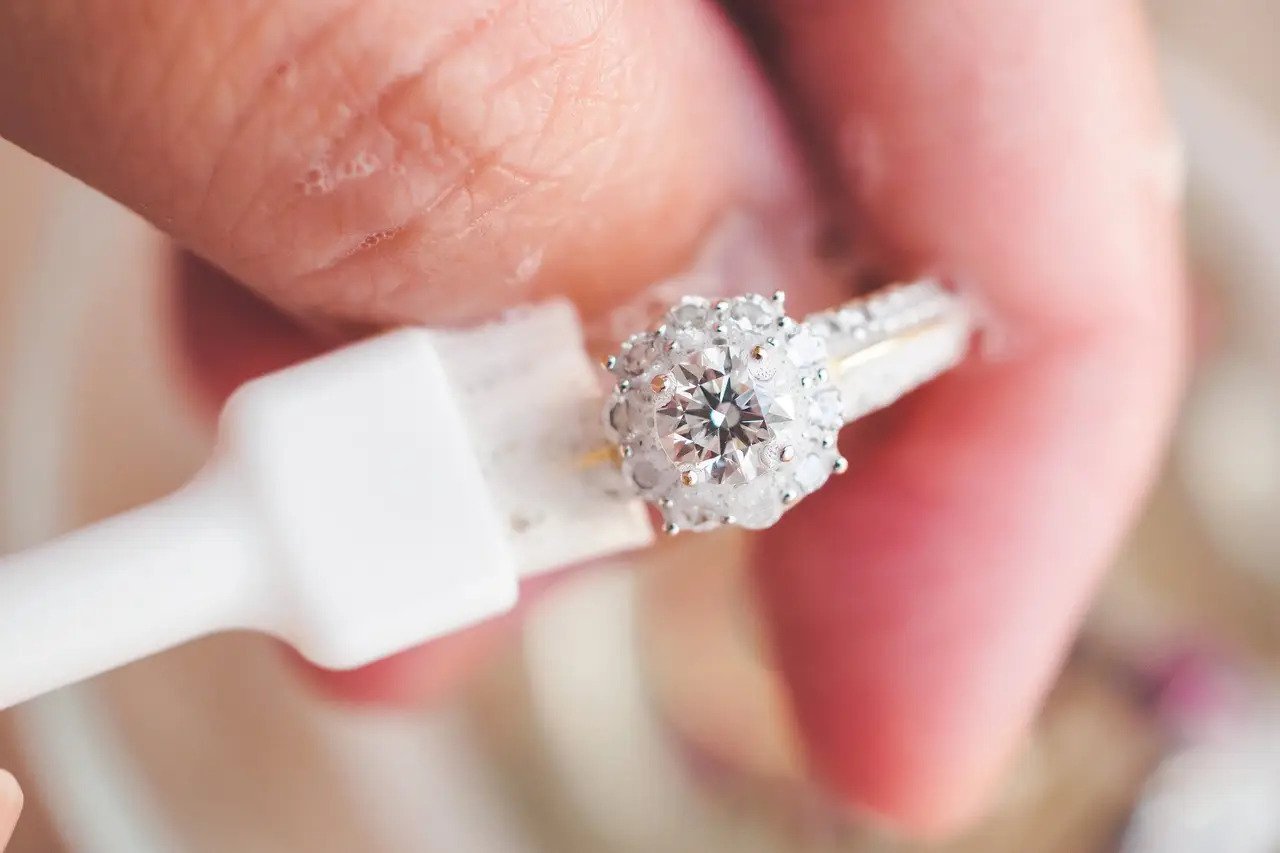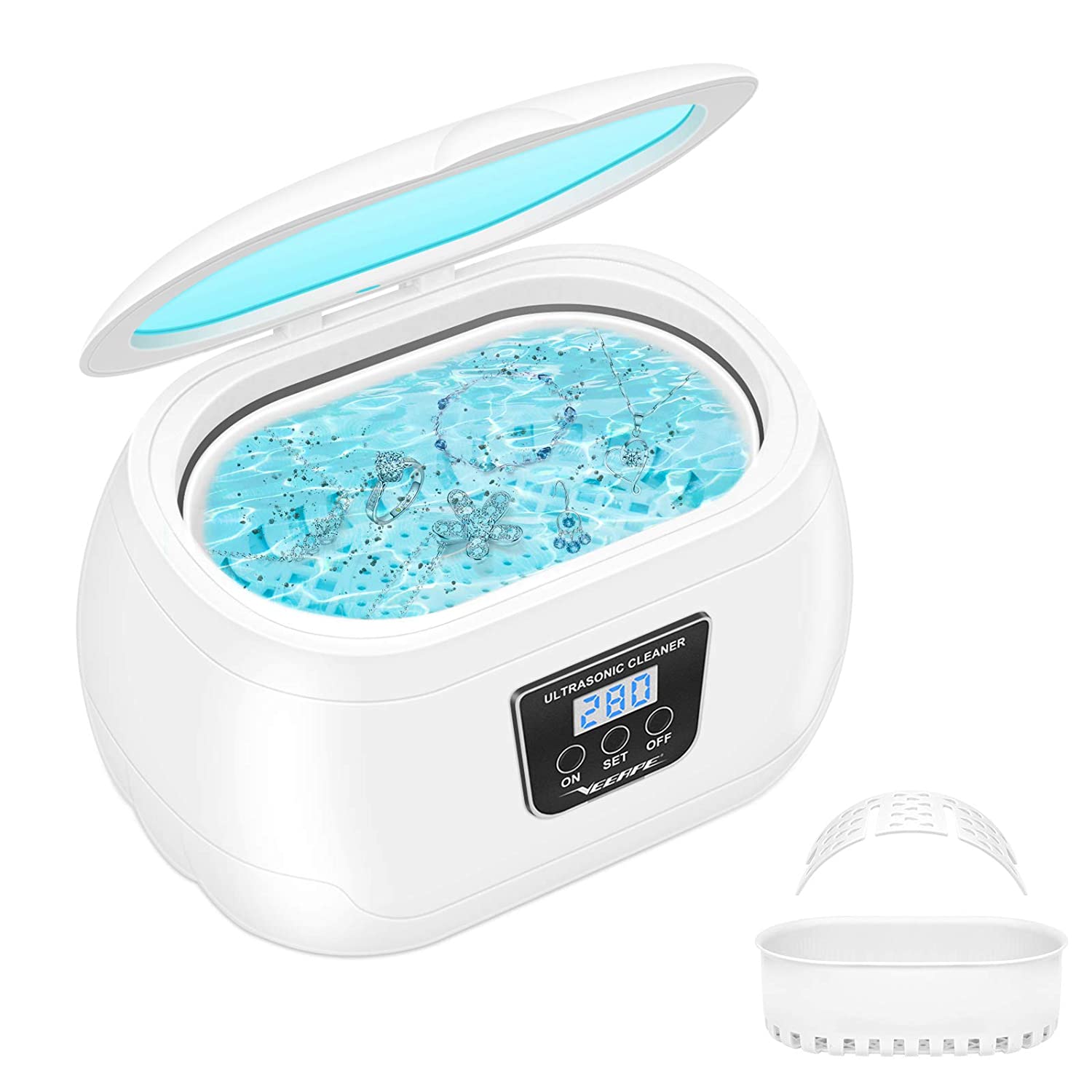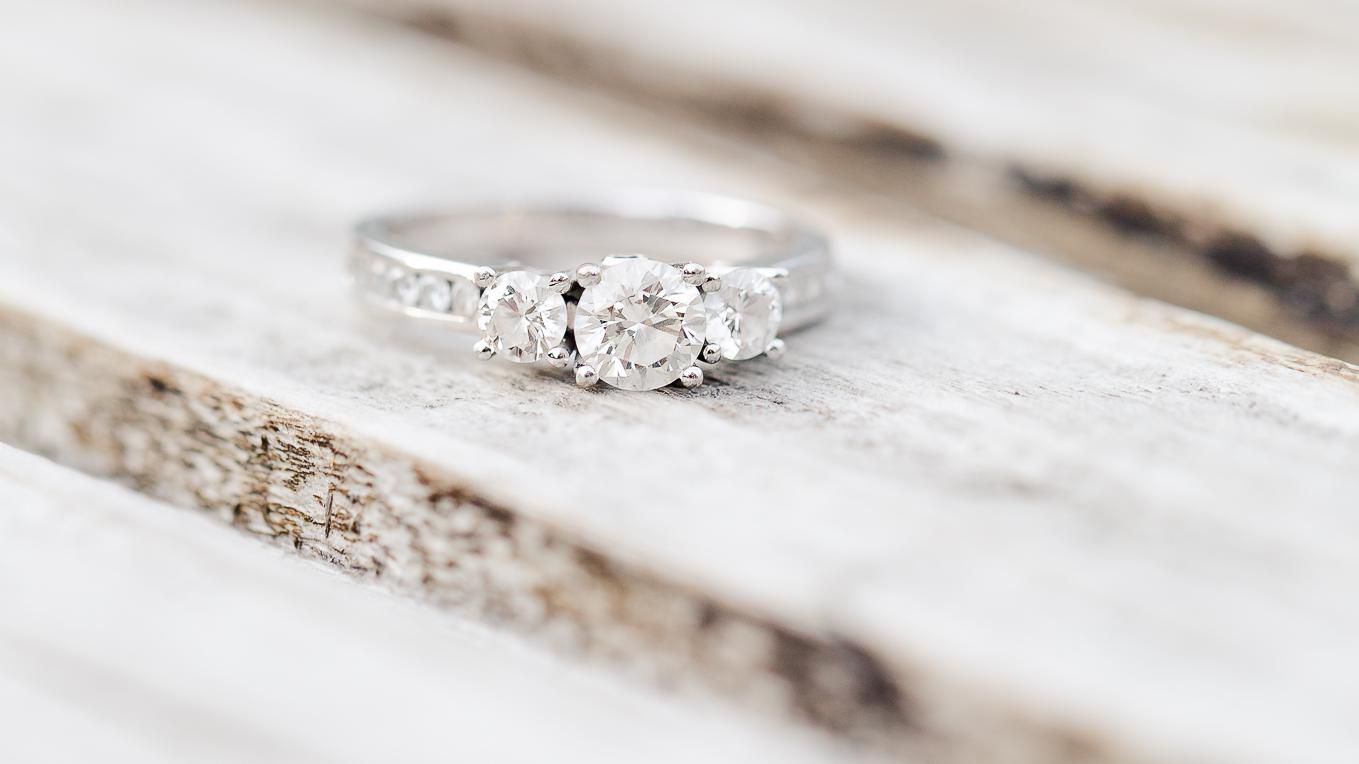Cleaning Diamonds With An Ultrasonic Cleaner
When there is a buildup of dirt particles on diamonds, it might be challenging to remove them using conventional cleaning techniques. This is when cleaning diamonds with an ultrasonic cleaner come in.
Author:Dr. Felix ChaosphereReviewer:Xander OddityJul 01, 202228 Shares1.1K Views

When there is a buildup of dirt particles on diamonds, it might be challenging to remove them using conventional cleaning techniques. This is when cleaning diamonds with an ultrasonic cleanercomes in.
If you have ever wondered what the best technique is to clean a diamond, then you should read this article because it will provide you with the answers you need.
Firstly what is "Optics of a Dirty Diamond" or a "dirty diamond"? It means that diamonds have the ability to attract oil and grease.
Even the oils that are already present on our skin are drawn to the diamond, and they combine to create a very thin film on its surface.
When diamonds are used in everyday life, these oils are the principal cause of filth that accumulates on them.
It is recommended to soak your diamonds in a cleaning solution overnight to maintain their cleanliness, but if it has been a while since they have been cleaned, they suggest using an ultrasonic jewelry cleaner instead.
If the prongs and settings on your jewelry are not loose, ultrasonic cleaning is your best choice for achieving excellent cleaning each and every time.
You might want to think about investing in an ultrasonic cleaner, which is a device that breaks up grime on your jewelry by using ultrasound waves.
How Do Ultrasonic Cleaners Work?
The ultrasonic cleaning method is a scientific advancement that was first put into use somewhere around the year 1970.
In the industrial sector, it has been utilized for purposes including the cleaning of small delicate pieces and the acceleration of surface treatment procedures.
In today's world, ultrasonic cleaners are put to use to clean a wide variety of items, including jewelry, watches, coins, fountain pens, optical lenses, scientific samples, medical instruments, gramophone records, musical instruments, window blinds, electronic equipment, and the parts of industrial machines.
In order to aggregate the liquid solution and create the cavitation of solution molecules, the cleaning process makes use of high-frequency sound waves, which typically have a frequency of 40 kHz.
The cavitation bubbles that are conveyed via the liquid assist in cleaning the surface of the object that is immersed in a variety of contaminants, including dust, dirt, oil, grease, wax, pigments, and fingerprints, amongst others.
The liquid solution can simply be water, but adding a solvent that is suited to the object that is being submerged will almost always improve the effect.
During the process of cleaning, it is important to emphasize that no objects should be allowed to settle on the base of the device in any way.
Because of this, cavitation will not occur on the portions of the item that are not in touch with the liquid solution.
The ultrasonic cleaning procedure typically takes between three and six minutes, although this time frame might be extended if necessary depending on the item that needs to be cleaned.
It is important to keep in mind that ultrasonic cleaning by itself does not sanitize the items being cleaned.
Because of this, the procedure of sterilizing often comes after the cleaning step in applications related to it.
How Cleaning Diamonds With An Ultrasonic Cleaner Is Done?
Diamond is the most durable and hardest gemstone, scoring a 10 on the Mohs scale of gemstone hardness, which indicates that it can easily tolerate ultrasonic waves.
However, using ultrasonic equipment to clean diamonds might occasionally be hazardous.
This is especially true for diamonds that have a substantial quantity of inclusions, as ultrasonic vibrations have the potential to damage the faults on the stone's interior and cause it to break.
If this is the case, you might consider investing in the services of a professional cleaning company.
Diamonds with clarity enhancements are part of another category that carries risk.
The technique of enhancing a stone's clarity involves laser drilling and crack filling.
Because of these processes, the crystalline structure of the stone is compromised during the enhancement process.
Because of this, when an improved diamond is cleaned with ultrasonic equipment, it has a greater chance of cracking or even breaking.
In a similar manner, you should not clean color-enhanced diamonds using an ultrasonic cleaner. If the diamond has been treated to improve its color, the effect of ultrasonic vibrations can be reversed, causing the color of the stone to become less vibrant.
The nature of the treatment determines whether or not this can occur.
What Liquid To Use In Ultrasonic Cleaner?
Deionized water, which is a natural solvent, should be used in an ultrasonic cleaner as the first step in an effort to improve the effectiveness of the cleaning process performed by the device.
Because it does not include any mineral salts or other contaminants, it comes highly recommended.
In addition to this, it is more reactive than regular water, and it does not leave any stains on the goods that it washes.
Can Sapphires Go In An Ultrasonic Cleaner?
Yes, sapphires can go in an ultrasonic cleaner for cleaning.
Which Gem Should Never Be Placed In An Ultrasonic Cleaner?
It is important to exercise caution when working with clear ruby and sapphire; nevertheless, star ruby and star sapphire should never be cleaned in an ultrasonic machine.
Whether they have been treated or not, there are some gems that should not be cleaned in an ultrasonic because of their sensitivity to heat and fluctuations in temperature.
So, these gems should not be cleaned in an ultrasonic.
Which Metals Can Go In An Ultrasonic Cleaner?
Ultrasonic cleaners have a well-deserved reputation for producing excellent results when used on precious metals.
Ultrasonic equipment can be used to clean gold in all of its colors, including white, yellow, and rose.
An ultrasonic machine is a suitable method for cleaning jewelry made of silver and platinum as well.
Tungsten, however, is an exception since it is susceptible to damage when it is exposed to ultrasonic waves.
It is not suggested to use ultrasonic cleaners on oxidized or antique metals because of the risk of damaging the surface of the metal.
You could try using gentle cleaning solutions or warm water with some dish soap in this scenario.
When buying any piece of jewelry, you should make it a point to inquire with the jeweler about whether or not it can be cleaned using an ultrasonic cleaner.
The safest course of action is to check that the piece of jewelry in question is devoid of any alloys or diamonds that could potentially be damaged during the cleaning procedure.
GrandStateGecko said that he is doubtful about it, "I doubt it. As a chemist, I can tell you ultrasound doesn't clean that well. Even brush and soap can give better results in lots of situations."
avhir0ck explained the working of the ultrasonic machine, "How does it work? An ultrasonic cleaner is a device to remove the dirt from jewelry by using ultrasound. The items are placed in a tank filled with a cleaning solution, when the cleaner is turned on, its motor produces ultrasonic vibrations through the liquid. The vibrations break down the dirt particles accumulated on the surface of the jewelry ornament."
Another shared some interesting information, "Jewelry is usually cleaned in an ultrasonic cleaner after being polished. There is usually a wax substance that is on the polishing wheel that leaves residue on the ring. It is cleaned in the ultrasonic cleanser, which is what you see coming off of it. It isn’t just regular dirt or grime from daily wear. Afterward, it is dried off under a high pressure steamer to make the jewelry appear brand new."
People Also Ask
Can You Clean Diamonds In An Ultrasonic Cleaner?
Yes, you can clean them with an ultrasonic cleaner. In a rare case, it is still possible that diamonds may be damaged if they have significant inclusions.
What Gemstones Should Not Be Cleaned In An Ultrasonic Cleaner?
Pearls, coral, tortoiseshell, ivory, and cameos made of shell, jet, and amber should never be cleaned using an ultrasonic device because they are porous materials
What Gemstones Can Be Cleaned In An Ultrasonic Cleaner?
Diamond, Ruby, Sapphire, Amethyst, and Citrine, together with man-made gemstones — these are the big five! These jewels are the ideal candidates for ultrasonic cleaning devices. When you are cleaning, please make sure that none of the things come into contact with one another.
Conclusion
Have you ever tried cleaning diamonds with an ultrasonic cleaner? Do let us know what was your experience in the comment section!

Dr. Felix Chaosphere
Author
Dr. Felix Chaosphere, a renowned and eccentric psychiatrist, is a master of unraveling the complexities of the human mind. With his wild and untamed hair, he embodies the essence of a brilliant but unconventional thinker. As a sexologist, he fearlessly delves into the depths of human desire and intimacy, unearthing hidden truths and challenging societal norms.
Beyond his professional expertise, Dr. Chaosphere is also a celebrated author, renowned for his provocative and thought-provoking literary works. His written words mirror the enigmatic nature of his persona, inviting readers to explore the labyrinthine corridors of the human psyche.
With his indomitable spirit and insatiable curiosity, Dr. Chaosphere continues to push boundaries, challenging society's preconceived notions and inspiring others to embrace their own inner tumult.

Xander Oddity
Reviewer
Xander Oddity, an eccentric and intrepid news reporter, is a master of unearthing the strange and bizarre. With an insatiable curiosity for the unconventional, Xander ventures into the depths of the unknown, fearlessly pursuing stories that defy conventional explanation. Armed with a vast reservoir of knowledge and experience in the realm of conspiracies, Xander is a seasoned investigator of the extraordinary.
Throughout his illustrious career, Xander has built a reputation for delving into the shadows of secrecy and unraveling the enigmatic. With an unyielding determination and an unwavering belief in the power of the bizarre, Xander strives to shed light on the unexplained and challenge the boundaries of conventional wisdom. In his pursuit of the truth, Xander continues to inspire others to question the world around them and embrace the unexpected.
Latest Articles
Popular Articles

